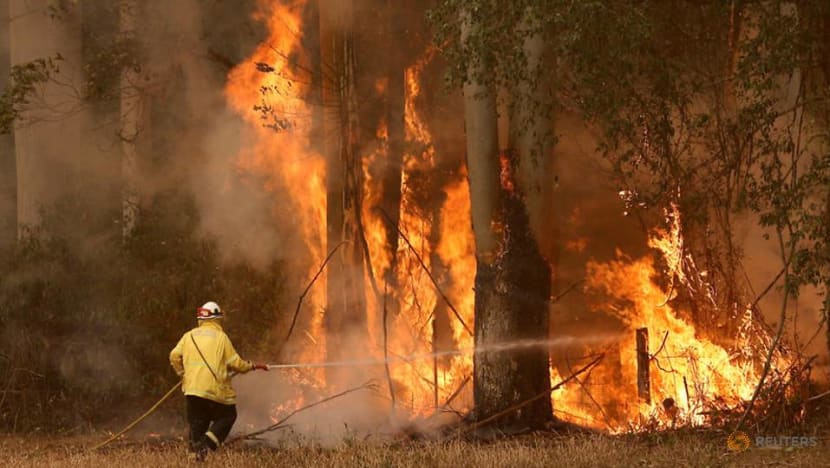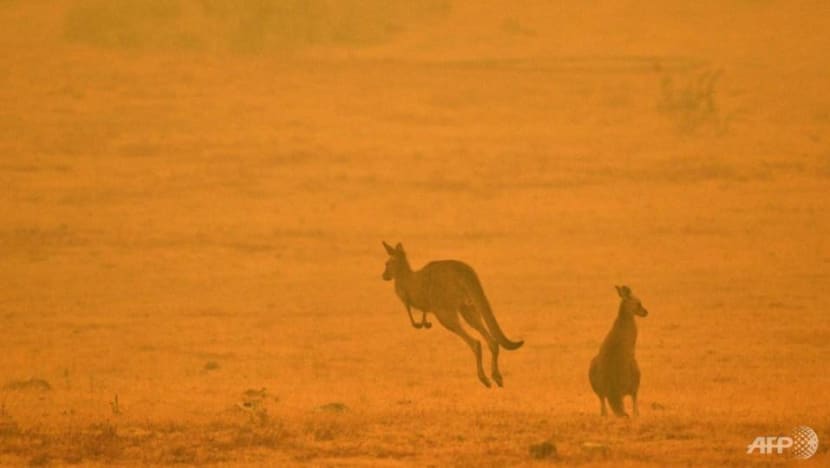Australia’s climatologists, emergency workers brace for another grim bushfire crisis amid weather anomalies
Experts believe this summer has the potential to unleash the same alarming conditions as the catastrophic bushfire crisis a few years ago.

SYDNEY: Climatologists and emergency workers in Australia are facing the prospect of another serious bushfire crisis, sparked by a combination of global warming and the expected arrival of the El Nino climate pattern.
After three years of rain and excessive bushland growth, severe drought and long heatwaves are likely to trigger another alarming season of wildfires, said observers, adding that early signs are not encouraging.
Australia is worried about the growing impact of climate change, especially with recent weather anomalies such as blistering heatwaves, massive wildfires, torrential rains and deadly floods observed around the globe.
HOTTER WEATHER EXPECTED
Just three years ago, the country was in the grip of one of its worst natural disasters, where 33 people died in the bushfires and more than 400 were killed by smoke inhalation.
About 80 per cent of the population were either directly or indirectly affected by the bushfires, and over a billion native animals were burned to death.
Experts believe this summer has the potential to unleash much of the same alarming conditions as the catastrophic bushfire crisis a few years ago.
“We are seeing the prospect of a drier fire season and certainly the prospects of a very dry winter, and we’ve already seen June and July were very dry months,” said New South Wales Rural Fire Service commissioner Rob Rogers.
“Those are indicators to show that we are going to have some busy periods certainly in spring, and if we do have an El Nino event, then of course throughout summer the risk is that we are going to get more elevated temperatures and less rainfall again in summer.”

The El Nino weather pattern, which is caused by warmer temperatures in the Pacific, is among the biggest worries as the phenomenon usually heralds drought and much hotter weather in eastern Australia.
“It’s really, really concerning,” said natural disasters expert Greg Mullins, founder of the Emergency Leaders For Climate Change, a group of former Australian fire and emergency service leaders with an interest in addressing extreme weather causes.
“When you add in El Nino, a degree or two difference can really mix things up and make them extremely dangerous, because you’ve got more chances of drought, very high temperatures - extreme to more extreme - so as firefighters, we fear El Nino.”
Mr Mullins, who has more than 50 years’ experience as a firefighter and was a former fire commissioner, knows firsthand the difficulties working with such conditions, having dealt with the bushfire crisis three years ago.
“We had fire-driven thunderstorms above us,” he recalled. “Trees being snapped off like toothpicks. Fire trucks lifted up and dropped on their roofs. So it was just frightening.”
LIKELY SURGE IN DISRUPTIVE WEATHER PATTERNS
The arrival of the El Nino event has been declared by the World Meteorological Organization (WMO), setting the stage for a likely surge in disruptive weather patterns.
“The tropical Pacific Ocean is currently experiencing El Nino conditions, and this is the result of rapid and substantive change both in the atmosphere and in the ocean,” said weather scientist Wilfran Moufouma-Okia, head of the Regional Climate Prediction Services at WMO.
However, no two El Ninos are the same, observers pointed out.
Australia’s Bureau of Meteorology has been uncertain about declaring an El Nino event or how long it might last.
Bureau meteorologist Hugh McDowell said: “The climate models are indicating that it’s going to be at least through spring and potentially through summer and maybe into autumn as well.”
In the fast-changing world of climate change, science will clearly play an increasingly important role in mitigating the impact, said experts.
Emergency services will not just be relying on traditional fire fighting methods to battle the consequences of El Nino. This time, they will be tapping artificial intelligence (AI) to do so.
Commissioner Rogers said: “Because we could have a hundred fires burning at any one time and having people who can look at that and say what is our biggest priority right now is a tough gig. It’s a pretty hard thing to do, and as you get more and more busy it gets harder.
“So we are looking now at using AI to look at each fire and see what’s the potential, how many properties are going to be affected in the next couple of hours, and ranking those for us.”




















